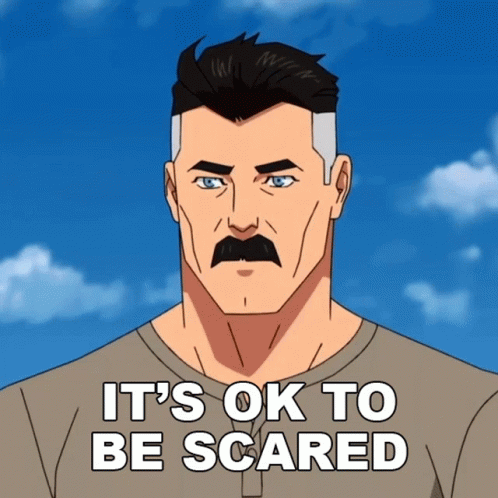...See more
Hi everyone! I hope you’re doing well. You’ve been working hard, engaging with this series, and tackling tasks that require deep reflection and effort. I know this is not easy work! But you are capable of doing hard things! While this post isn’t directly related to the book we’re basing the series on, it’s inspired by the use of quotes in the book.
The Toughest Parts of Worry
Do you know what makes worry so hard? It makes us feel alone and isolated. It also makes us so uncomfortable. Here are two of the toughest parts of what worry does:
* Isolation: Worry makes you feel so alone, as if you’re the only one carrying this mountain of worry, and no one else can understand or relate.
* Discomfort: Worry also makes the world feel uncomfortable, like everything is out of your comfort zone.
This reminds me of a reel I saw, where the person longed for home while sitting at home. Because, as we know, home isn’t just a physical place, it’s a concept, a feeling of safety and comfort. Today we will tackle these two tough parts. Here is how!
You are not alone! Worrying is a Universal Experience
Many of us feel isolated, especially when it comes to expressing our worries. As humans, we often hold back from sharing the extent of our stress, making it feel like we are carrying the weight alone. Think about your own worries: how many people in your life truly know just how much they affect you? More often than not, it’s not many. But the reality is, that everyone experiences worry, some more intensely than others. It's part of the human experience. Across history, countless philosophers, thinkers, and leaders have offered wisdom on managing worry. Here are some quotes that speak to the universal nature of worry, along with the periods they came from. The time periods have been added to remind everyone that humans have struggled with worry and reflected on managing worry throughout history.
* “If you see ten troubles coming down the road, you can be sure that nine will run into the ditch before they reach you.” — Calvin Coolidge (1920s)
* “I have suffered a great many tragedies in my life, some of which actually happened.” — Mark Twain (1910)
* “The wise man accepts his pain, endures it, but does not add to it.” — Marcus Aurelius (161–180 CE)
* “We suffer more often in imagination than in reality.” — Seneca (4–65 CE)
* “The greatest mistake you can make in life is to be continually fearing you will make one.” — Elbert Hubbard (1800s)
* Fear is a mile wide and an inch deep (Unsure who said it, recently Alex Hormozi but historically could have been Lao Tzu)
These quotes span different periods, yet they all share the same theme: that worry is a constant part of life, and often, the stress we feel is amplified in our minds. This timeless wisdom shows us that we are not alone in our struggles.
In addition, many religious sources have also echoed similar sentiments, offering comfort and perspective on our worries. For example, a well-known passage from the Quran reminds us that with hardship, comes ease. Similarly, the Serenity Prayer encourages us to accept what we cannot change while finding courage for the things we can influence. Whether you turn to philosophy, religion, or simply the words of others who have been there, the message remains: We will all experience worry, but we don’t have to face it alone. And in time, things do get better. I’m reminded of something I think Tim Ferriss once shared. He mentioned that when he’s feeling overwhelmed by the worries of the present, he goes to the library, closes his eyes, and picks up a random book from the history section. What he often finds is that throughout history, people have faced grim times and deep worries, yet here we are, still moving forward and making it through. It’s a powerful reminder that we are not alone in our struggles, and things have a way of working themselves out over time. Unfortunately, I could not find the video.
Creating Home
Now in the second half of this post, we will discuss the idea of creating our home! A place where we can find comfort. I have distilled it down into core parts, physical and mental comfort. For home is where you feel physically and mentally relaxed.
a. Physical comfort
This can include your physical space being comfortable, it can include things like:
* Create a Comfort Ritual: Set aside time each day for a comforting routine, like enjoying a hot drink, reading, journaling, or simply taking a deep breath to signal relaxation.
* Comfortable Furniture: Pay attention to the furniture you spend the most time with, ensuring that chairs, couches, or beds are comfortable with small adjustments like extra cushions or proper lumbar support.
* Comforting Fabrics: Surround yourself with soft, cozy fabrics, such as fleece, cotton, and flannel in clothes, throw blankets, or bed linens to bring warmth and relaxation.
* Surround Yourself with Nature: Bring elements of nature into your space by adding plants, flowers, and natural textures like wood to create a calming and grounding atmosphere.
* Create a Clean, Organized Space: Maintain a clutter-free environment by cleaning regularly, adding organizational tools like baskets or drawer organizers, and decluttering to reduce decision fatigue.
* Soundproof Your Space: Create a quieter space with soundproofing measures, like thick curtains or acoustic panels, or use noise-canceling headphones or calming sounds like rain or white noise.
* Personal Touches: Add sentimental items like photographs, meaningful objects, or art that brings comfort to provide a sense of connection and make your space feel like “home.”
* Spraying Scents or Using Wax Melts/Candles/Diffusers: Use calming scents like lavender, eucalyptus, or chamomile through candles, wax melts, or diffusers to create a peaceful atmosphere.
* White Noise or Relaxing Sounds: Block out distractions or fill silence with calming sounds, such as rain, fire crackling, or the hum of a busy café, using a white noise machine or music.
* Create Systems to Maintain a Clean Space: Implement simple systems like a basket for clutter, drawer organizers, or wet wipes on your desk to maintain cleanliness and order throughout your day.
* Get Rid of Unnecessary Items: Declutter your space by removing things you no longer need to reduce decision fatigue and make room for a more peaceful environment.
b. Mental Relaxation
The following are some ways you can build and maintain a relaxed mind.
* Create a Comforting Routine: Set aside time each day for activities like journaling, reading, or deep breathing exercises to help your mind unwind and reset.
* Practice Mindfulness or Meditation: Take moments throughout the day to focus on the present, practicing mindfulness or guided meditation to calm racing thoughts and find inner peace.
* Limit Overstimulation: Reduce mental overload by limiting the use of screens, taking breaks from social media, and avoiding excessive news consumption.
* Take Breaks for Mental Reset: Regularly step away from work or stress to recharge, whether it’s a short walk, stretching, or engaging in a relaxing hobby.
* Reframe Negative Thoughts: Challenge and change negative self-talk by using positive affirmations or focusing on solutions instead of dwelling on problems.
* Engage in Creative Activities: Express yourself creatively through art, writing, music, or crafting, allowing your mind to focus on something enjoyable and distracting from worry.
* Limit Multitasking: Focus on one task at a time to reduce mental clutter and improve concentration, which can lead to a calmer, more relaxed state of mind.
* Practice Gratitude: Keep a gratitude journal or take a few moments each day to reflect on things you’re grateful for, which helps shift focus from stress to positive aspects of life.
* Pray on it: If you are religious, it can really help to get in touch with religion-specific practices to ease your mind. For example, a Muslim may pray on it.
* Connect with Supportive People: Reach out to friends, family, or a support group to talk about your thoughts and feelings, reinforcing the idea that you are not alone.
* Consume Content that Encourages an Optimistic Mindset: Engage with books, podcasts, or videos that promote positive thinking, personal growth, and resilience.
Tasks of the week!
Please complete both parts and any sub-tasks.
Part 1:
* Choose one quote or thought that helps you feel less alone. It can be from the post above or anywhere else that resonates with you. Share it with us.
* Write down at least 3 activities from the Physical Comfort section and 3 from the Mental Relaxation section that you can incorporate into your day. You can use the lists provided above or any other activities you already enjoy.
Part 2:
* Visualize a day where you’ve included at least two activities from each section (physical comfort and mental relaxation). How does your day look with these activities? You can keep your visualization brief.
Example:
"In the morning, I clean up my workspace (physical) and listen to a calming podcast (mental). I take breaks during the day to do a quick stretching routine (physical) and meditate for 5 minutes (mental) before bed."
-------------------------
This post is part of the Conquering Worry series, you can find all posts of the series here. [https://www.7cups.com/forum/community/CommunitySpace_2590/MasterpostConqueringWorryOngoingSeriesCertificateAvailable_344231/]











































